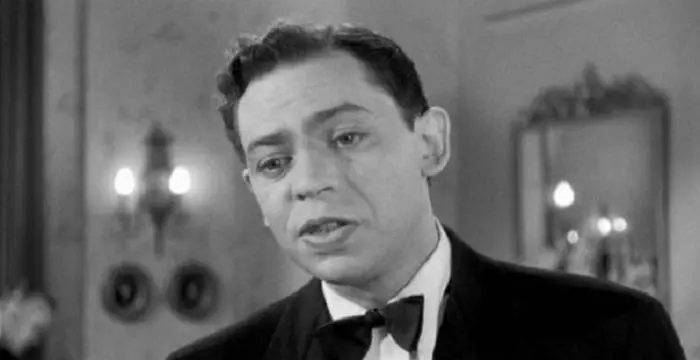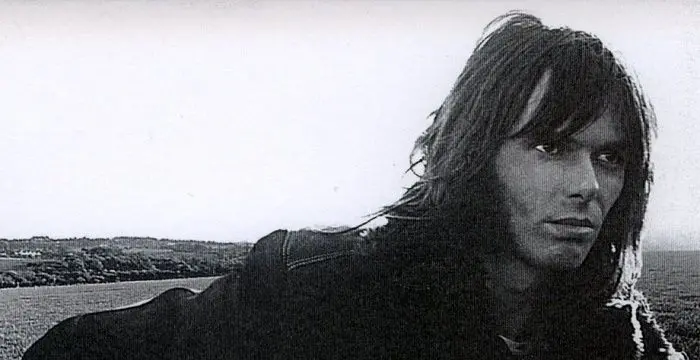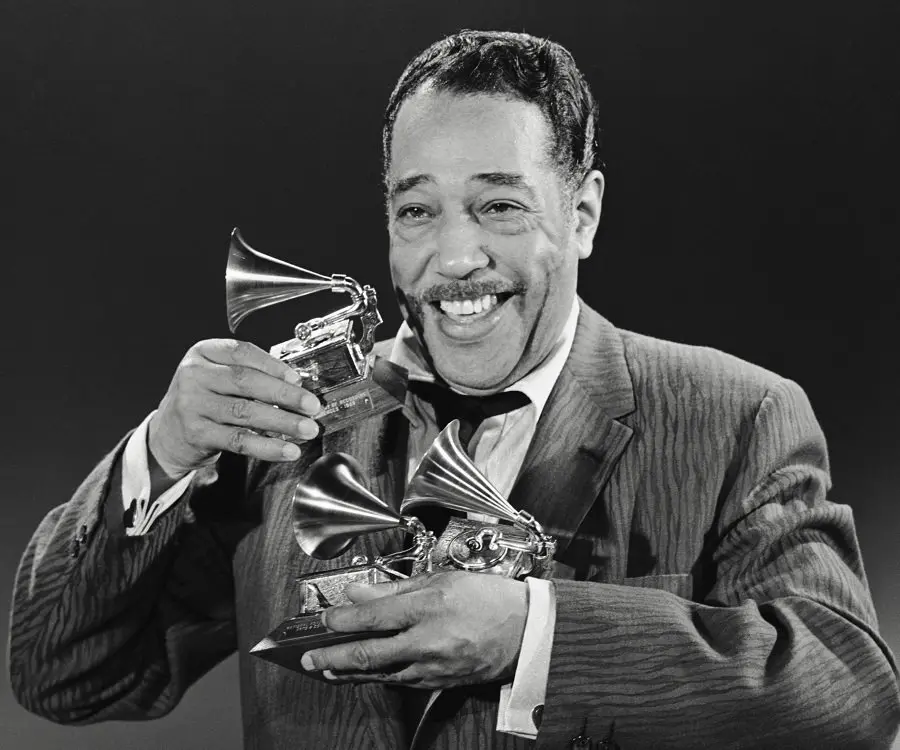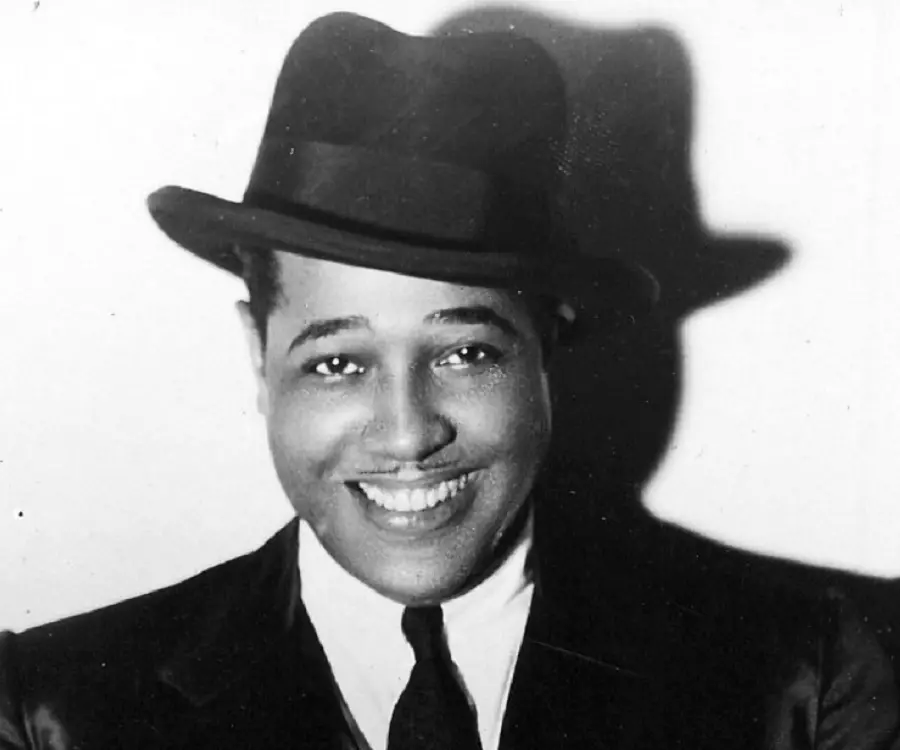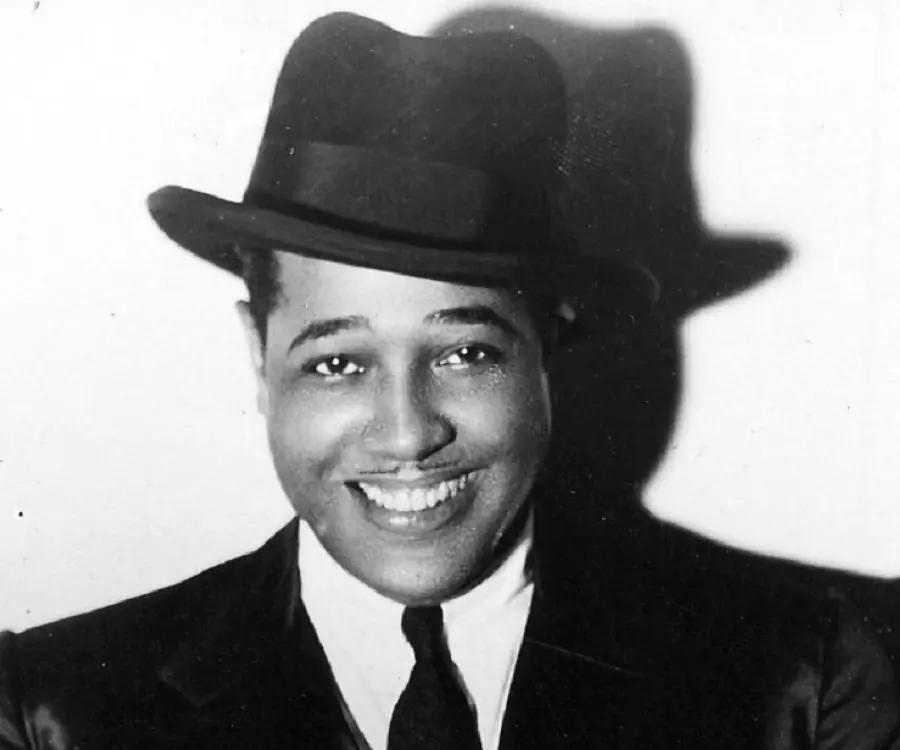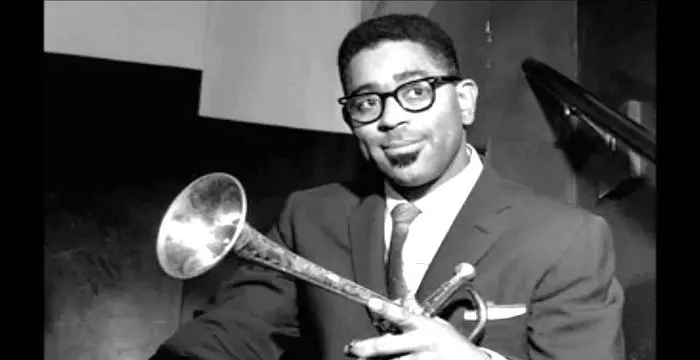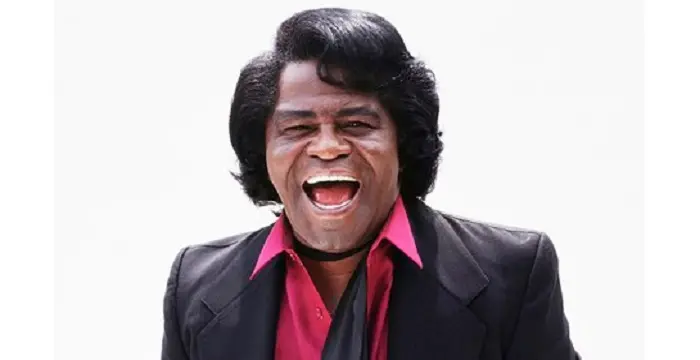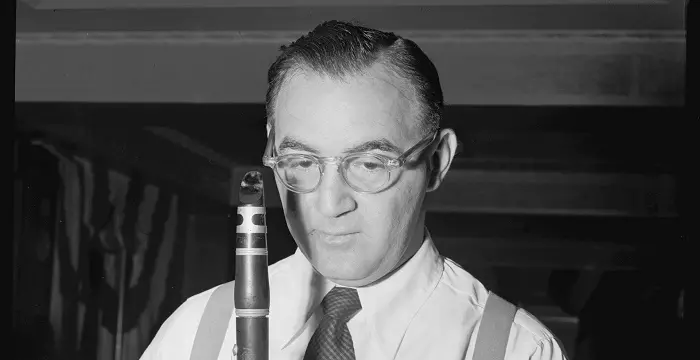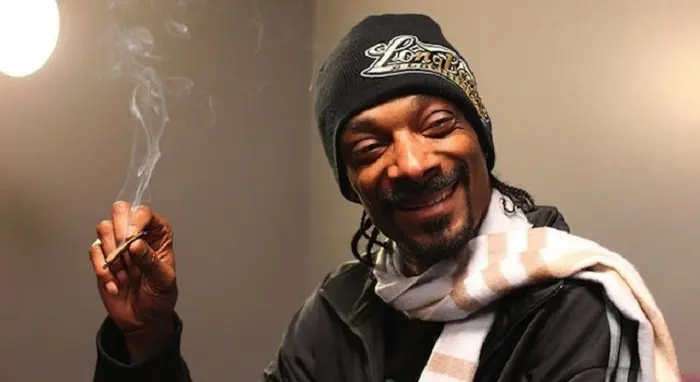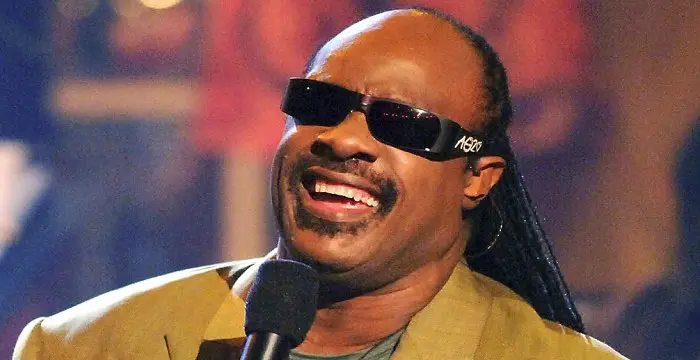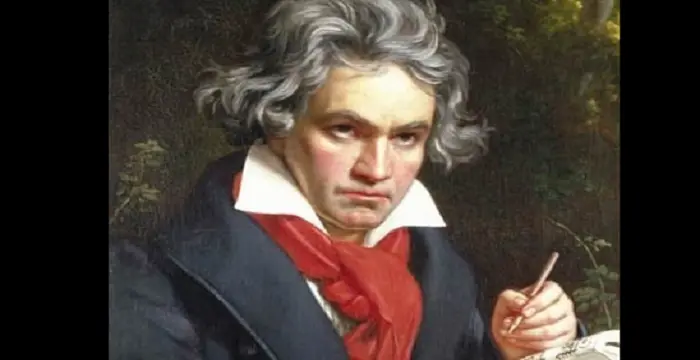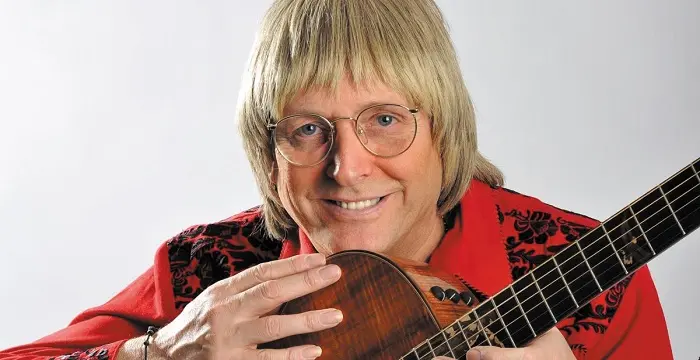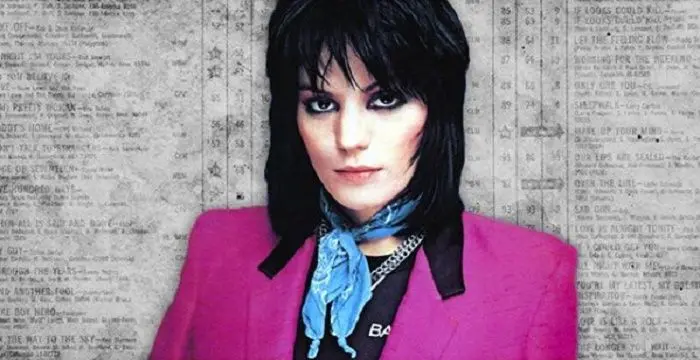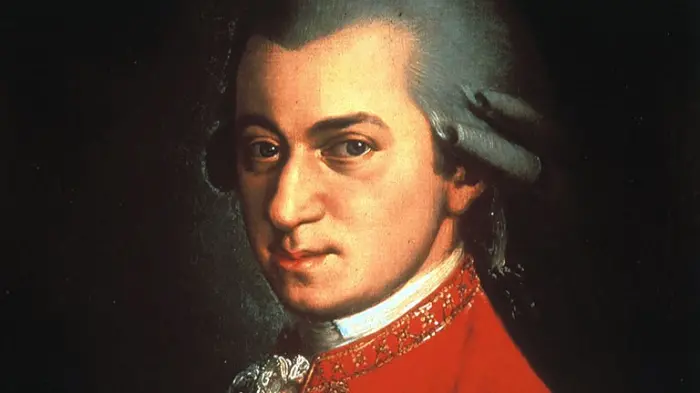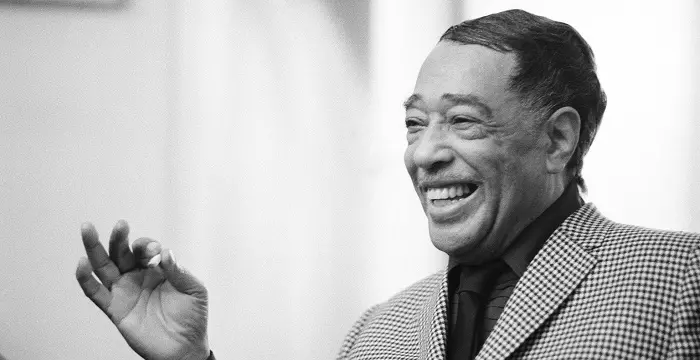
Duke Ellington - Pianists, Timeline and Family
Duke Ellington's Personal Details
Duke Ellington was an American jazz composer and performer who is among one of the greatest names in the history of jazz
| Information | Detail |
|---|---|
| Birthday | April 29, 1899 |
| Died on | May 24, 1974 |
| Nationality | American |
| Famous | African American Singers, Black Musicians, Black Singers, Musicians, Pianists, Conductors, Composers, Bandleader, Pianists |
| Spouses | Edna Thompson, Mildred Dixon |
| Siblings | Ruth Ellington Boatwright |
| Childrens | Beatrice Ellis, Mercer Kennedy Ellington |
| Universities |
|
| Cause of death |
|
| Birth Place | Washington, D.C. |
| Gender | Male |
| Father | James Edward Ellington |
| Mother | Daisy Kennedy |
| Sun Sign | Taurus |
| Born in | Washington, D.C. |
| Famous as | Composer, Pianist and Bandleader |
| Died at Age | 75 |
// Famous Pianists
Andy Biersack
Learn about Andy Biersack, the famous American rock singer and pianist; his birthday, what he did before fame, his family life, fun trivia facts and more.
Oscar Levant
Oscar Levant was a pianist and comedian known for playing sarcastic characters on screen. This biography of Oscar Levant provides detailed information about his childhood, life, achievements, works & timeline.
Nicky Hopkins
Nicky Hopkins was a renowned English pianist and session keyboardist. This biography provides detailed information about his childhood, life, music career, achievements and timeline.
Duke Ellington's photo
Who is Duke Ellington?
Edward Kennedy "Duke" Ellington was an American jazz pianist, composer, and bandleader. He is regarded as one of the greatest jazz composers and a prolific performer of his time. Most of his musical works on instruments set standards for others, which were later adapted into songs. This renowned jazz musician exhibited his excellence in film scores and classical compositions too. Considered a very important personality in the history of jazz music, he liked to call his music ‘American Music’ instead of jazz. A bandleader, pianist and a composer, Ellington was nicknamed ‘Duke’ by his childhood friends for his gracious and well-mannered behavior. He was truly a genius in the sense of instrument combinations, arranging jazz and improvising music that made Ellington stand unique among other composers of his time. His reputation as a composer and bandleader is intact even after his death.He collaborated with many others and wrote more than one thousand compositions and many of his extant works became a standard in jazz music. Ellington and his orchestra saw a major career revival after an appearance at the Newport Jazz Festival, Rhode Island, in July 1956. He recorded for most American record companies of his time and performed in several films and composed several stage musicals. With his creative genius, Ellington elevated the perception of jazz to an art form on a par with other traditional musical genres.
// Famous Bandleader
Dizzy Gillespie
Dizzy Gillespie was one of the greatest jazz trumpeters of all times. Check out this biography to know about his childhood, family life, achievements and other facts related to his life.
James Brown
James Brown was an American musician and recording artist regarded as ‘The Godfather of Soul’. This biography provides detailed information about his childhood, life, achievements, works & timeline.
Benny Goodman
Benny Goodman was a leading jazz clarinet player and an outstanding bandleader of the Swing Era. Check out this biography to know about his childhood, family life, achievements and other facts related to his life.
Childhood & Early Life
Edward Kennedy "Duke" Ellington was born on April 29, 1899, in Washington D.C. His father James Edward Ellington and mother Daisy Kennedy Ellington were pianists. His father played operatic arias while parlor songs were his mother’s first choice.
They stayed with his maternal grandparents at 2129 Ida Place which is now called Ward Place, NW in the West End neighborhood of Washington, D.C.
When Ellington was 7 years old, he began his piano training. He took lessons for the same from Marietta Clinkscales.
His friend Edgar McEntree gave him the nickname of “Duke” because of his casual and graceful manner and the dapper dress that he wore. He pursued his education from Armstrong Technical High School in Washington, D.C.
He was very fond of playing baseball. The first job that he did was of selling peanuts at Washington Senators baseball games.
In the summer of 1914, he wrote his first composition "Soda Fountain Rag" that is also known as the "Poodle Dog Rag" while he was working as a soda jerk in Poodle Dog Café.
He drew inspiration from many piano players namely Phil Wurd, Caroline Thornton, Luckey Roberts, Turner Layton, Gertie Wells, Clarence Bowser, Sticky Mack, Harvey Brooks, Claude Hopkins, Eubie Blake, Doc Perry, Cliff Jackson, Joe Rochester, Lester Dishman, Louis Brown and Blind Johnny.
He began listening and imitating ragtime pianists in Washngton D.C and also those who hailed from Atlantic City and Philadelphia. He got private lessons in harmony from Henry Lee Grant, a music teacher at Dunbar High School. With the additional guidance that he received from the pianists in his home town and from band leader Oliver "Doc" Perry, he inculcated a better understanding of the instrument, learned to read music sheets, improved his technique and projected a professional style.
In 1916 he opted out of an art scholarship to the Pratt Institute in Brooklyn for the sake of music and he also dropped out of Armstrong Manual Training School, where he was studying commercial art, just three months before his graduation.
In 1917 he started working as a freelance sign-painter and simultaneously began his hunt for bringing in together groups that could play for dances. In 1919 he met Sonny Greer who was a drummer from New Jersey. He started building his music business through sign painting. Whenever someone asked him to make a sign for a dance or party, he enquired if they had arranged for music and offered to play for them.
In late 1917s he formed his own group “The Duke's Serenaders". The very first performance that he gave was at the True Reformer's Hall, from where he earned 75 cents.
Ellington’s music and his band thrived and played throughout Washington, D.C. and Virginia. He usually played for embassy and private parties.
His band included Sonny Greer on drums, his childhood friend Otto Hardwick on alto saxophone, Elmer Snowden on banjo and Arthur Whetsol on trumpet. They performed for both African-American and white audiences which was quite rare in those times.
Career
When Ellington’s drummer Sonny Greer joined the Wilber Sweatman Orchestra in New York City, he decided to leave behind his successful career in Washington, D.C., and moved to Harlem.
After some time the young musicians left the Sweatman Orchestra to form their own, they faced a highly competitive emerging jazz scene that was hard to crack. After some time, the young musicians felt discouraged and returned to Washington, D.C.
In June 1923, a gig in Atlantic City, New Jersey, proved lucky for the group and got them a chance to play at the prestigious Exclusive Club in Harlem.
Initially, the group was known as ‘Elmer Snowden and his Black Sox Orchestra’ but after some time they renamed themselves ‘The Washingtonians’. In 1924, Snowden left the group and Ellington became the bandleader. After a fire incident, the club re-opened as the Club Kentucky.
By the end of 1924 Ellington made eight records among three of which received composing credit, which included, ‘ChooChoo’.
In 1925, he contributed four songs to Chocolate Kiddies starring Lottie Gee and Adelaide Hall, which introduced European audiences to African-American styles and performers. By now Ellington’s Kentucky Club Orchestra grew to a group of ten players and they developed their own unique sound.
October 1926 was a turning point in his career when he made a career-advancing agreement with agent-publisher Irving Mills. This agreement with Mills allowed him to record prolifically, which, in turn, brought popular recognition to Ellington.
In September 1927, King Oliver's (American jazz cornet player and bandleader) refusal to play as the house band at Harlem's Cotton Club landed the deal in Ellington's favor and weekly radio broadcasts from the club gave Ellington national exposure. From there on he never looked back.
He was not a strict disciplinarian and used charm, humor, flattery, and astute psychology to maintain control of his orchestra.
With the Great Depression worsening, the recording industry too was hit by the financial crisis and that resulted into dropping of over 90% of artists by the year 1933. In the case of Ellington’s Orchestra, radio exposure helped maintain popularity and his orchestra began to tour. Some records of this era include: "Mood Indigo", "Sophisticated Lady", "Solitude", and "In a Sentimental Mood".
In the early 1930s, the band's audience in America was mainly the African-American community but it had a huge following overseas, exemplified by the success of their trip to England and Scotland in 1933 and their 1934 visit to the European mainland.
His fame rose higher in the 1940s when he composed some of his masterworks, including "Concerto for Cootie," "Cotton Tail" and "Ko-Ko."
Some of Ellington’s most popular songs were "It Don't Mean a Thing if It Ain't Got That Swing," "Sophisticated Lady," "Prelude to a Kiss," "Solitude," and "Satin Doll" and many of his popular songs were sung by Ivie Anderson, a favorite female vocalist of Duke's band.
He also wrote many great and popular songs as “Sophisticated Lady,” “Rocks in My Bed,” and “Satin Doll”; “Don’t Get Around Much Any More,” “Prelude to a Kiss,” “Solitude,” and “I Let a Song Go out of My Heart”.
Ellington's career got a revival after his band’s performance at the Newport Jazz Festival on July 7, 1956. It returned him to wider prominence and introduced him to a new generation of jazz fans. Ellington’s concert at the festival made international news and resulted in an album that would become the best-selling long-playing recording of Ellington's career.
In his last decade, Ellington composed three pieces of sacred music – In the Beginning God , Second Sacred Concert, and Third Sacred Concert.
After the Second World War, his band often toured Europe and also played in Asia, West Africa, South America and Australia, besides frequently touring North America.
His autobiography ‘Music Is My Mistress’ was published in 1973. Ellington received as many as 12 Grammy awards - nine while he was alive.
Personal Life & Legacy
Ellington married his high school sweetheart Edna Thompson on July 2, 1918 at the age of 19.
On March 11, 1919 they were blessed with a baby boy, their first and only child. They named him Mercer Kennedy Ellington.
They parted ways in late twenties and in the year 1928 Mildred Dixon became Ellington’s companion and managed his company and travelled with him on his tours.
In 1938, he left his family and started living with Beatrice "Evie" Ellis, who was a Cotton Club employee.
In early 1960s he got close to Fernanda de Castro Monte.
Tempo Music was later run by Ellington’s sister Ruth and his son played piano and trumpet and formed his own band which he also led. He was also his father’s business manager and after his death he controlled the band.
Ellington died on May 24, 1974, due to pneumonia and lung cancer.
He was entombed in the Woodlawn Cemetery, The Bronx, New York City. His last words were, "Music is how I live, why I live and how I will be remembered.”
After his death, his band was controlled by his son, and they continued to release albums even after his death. “Digital Duke” won Grammy Award for Best Large Jazz Ensemble Album in 1988 and the credits for the same were given to ‘The Duke Ellington Orchestra’.
A number of memorials are dedicated to Ellington in Washington D.C, New York and Los Angeles.
Duke Ellington School of the Arts in Washington D.C provides education to students who aspire to consider career in arts. This school was originally build in 1935 and named the Calvert Street Bridge. It was, however, renamed as Duke Ellington Bridge in 1974.
Duke Ellington Building at 2121 Ward Place, NW got a bronze plaque attached to it in 1989.
In 2010, a park was named after him across the street from his birth site named Duke Ellington Park.
A coin featuring Ellington was launched on February 24, 2009, in the United States. He became the first American-African to be featured on a circulating coin in the US.
The West 106th Street where he lived for years was named as Duke Ellington Boulevard after his death.
The prestigious high school bands participate in a well-known annual competition named Essentially Ellington High School Jazz Band Competition and Festival.
Ellington was listed in the list of 100 Greatest African-American by scholar Molefi Kete Asante in 2002.
// Famous African American Singers
Snoop Dogg
Snoop Dogg is an American rapper and actor who emerged as one of the best-known figures in gangsta rap during the 1990s. This biography of Snoop Dogg provides detailed information about his childhood, life, achievements, works & timeline
Stevie Wonder
Stevie Wonder is an American musician, singer and songwriter, considered to be one of the most creative musical performers of the 20th century. This biography provides detailed information about his childhood, life, achievements, works & timeline
Lauryn Hill
Lauryn Noelle Hill is a famous hip-hop female artist from America who is into singing, songwriting, rapping, production and acting. Check out this biography to get detailed information on her life.
Duke Ellington's awards
| Year | Name | Award |
|---|---|---|
Grammy Awards | ||
| 1959 | Best Soundtrack Album, Background Score - Motion Picture or Television | Anatomy of a Murder (1959) |
Duke Ellington biography timelines
- // 29th Apr 1899Edward Kennedy "Duke" Ellington was born on April 29, 1899, in Washington D.C. His father James Edward Ellington and mother Daisy Kennedy Ellington were pianists. His father played operatic arias while parlor songs were his mother’s first choice.
- // 1914In the summer of 1914, he wrote his first composition "Soda Fountain Rag" that is also known as the "Poodle Dog Rag" while he was working as a soda jerk in Poodle Dog Café.
- // 1916In 1916 he opted out of an art scholarship to the Pratt Institute in Brooklyn for the sake of music and he also dropped out of Armstrong Manual Training School, where he was studying commercial art, just three months before his graduation.
- // 1917 To 1919In 1917 he started working as a freelance sign-painter and simultaneously began his hunt for bringing in together groups that could play for dances. In 1919 he met Sonny Greer who was a drummer from New Jersey. He started building his music business through sign painting. Whenever someone asked him to make a sign for a dance or party, he enquired if they had arranged for music and offered to play for them.
- // 2nd Jul 1918Ellington married his high school sweetheart Edna Thompson on July 2, 1918 at the age of 19.
- // 11th Mar 1919On March 11, 1919 they were blessed with a baby boy, their first and only child. They named him Mercer Kennedy Ellington.
- // Jun 1923In June 1923, a gig in Atlantic City, New Jersey, proved lucky for the group and got them a chance to play at the prestigious Exclusive Club in Harlem.
- // 1924Initially, the group was known as ‘Elmer Snowden and his Black Sox Orchestra’ but after some time they renamed themselves ‘The Washingtonians’. In 1924, Snowden left the group and Ellington became the bandleader. After a fire incident, the club re-opened as the Club Kentucky.
- // 1924By the end of 1924 Ellington made eight records among three of which received composing credit, which included, ‘ChooChoo’.
- // 1925In 1925, he contributed four songs to Chocolate Kiddies starring Lottie Gee and Adelaide Hall, which introduced European audiences to African-American styles and performers. By now Ellington’s Kentucky Club Orchestra grew to a group of ten players and they developed their own unique sound.
- // Oct 1926October 1926 was a turning point in his career when he made a career-advancing agreement with agent-publisher Irving Mills. This agreement with Mills allowed him to record prolifically, which, in turn, brought popular recognition to Ellington.
- // Sep 1927In September 1927, King Oliver's (American jazz cornet player and bandleader) refusal to play as the house band at Harlem's Cotton Club landed the deal in Ellington's favor and weekly radio broadcasts from the club gave Ellington national exposure. From there on he never looked back.
- // 1928They parted ways in late twenties and in the year 1928 Mildred Dixon became Ellington’s companion and managed his company and travelled with him on his tours.
- // 1933 To 1934In the early 1930s, the band's audience in America was mainly the African-American community but it had a huge following overseas, exemplified by the success of their trip to England and Scotland in 1933 and their 1934 visit to the European mainland.
- // 1935 To 1974Duke Ellington School of the Arts in Washington D.C provides education to students who aspire to consider career in arts. This school was originally build in 1935 and named the Calvert Street Bridge. It was, however, renamed as Duke Ellington Bridge in 1974.
- // 1938In 1938, he left his family and started living with Beatrice "Evie" Ellis, who was a Cotton Club employee.
- // 7th Jul 1956Ellington's career got a revival after his band’s performance at the Newport Jazz Festival on July 7, 1956. It returned him to wider prominence and introduced him to a new generation of jazz fans. Ellington’s concert at the festival made international news and resulted in an album that would become the best-selling long-playing recording of Ellington's career.
- // 1973His autobiography ‘Music Is My Mistress’ was published in 1973. Ellington received as many as 12 Grammy awards - nine while he was alive.
- // 24th May 1974Ellington died on May 24, 1974, due to pneumonia and lung cancer.
- // 1988After his death, his band was controlled by his son, and they continued to release albums even after his death. “Digital Duke” won Grammy Award for Best Large Jazz Ensemble Album in 1988 and the credits for the same were given to ‘The Duke Ellington Orchestra’.
- // 1989Duke Ellington Building at 2121 Ward Place, NW got a bronze plaque attached to it in 1989.
- // 2002Ellington was listed in the list of 100 Greatest African-American by scholar Molefi Kete Asante in 2002.
- // 2010In 2010, a park was named after him across the street from his birth site named Duke Ellington Park.
// Famous Composers
Ludwig van Beethoven
Ludwig Van Beethoven was one of the greatest composers the world has ever had. Check out this biography to know about his childhood, family life, and achievements.
Emina Jahović
Emina Jahović Sandal is a Serbian model, actress and singer-songwriter. Know more about her childhood, life, career, achievements and timeline in this biography.
John Denver
John Denver, a famous American singer-songwriter and activist, is remembered for songs like Take Me Home, Country Roads and Annie's Song. To know more about his childhood, career, profile and timeline read on
Joan Jett
Joan Jett is an American rock singer, musician, composer, actress, and record producer. This biography profiles her childhood, family, personal life, career, etc.
Dizzy Gillespie
Dizzy Gillespie was one of the greatest jazz trumpeters of all times. Check out this biography to know about his childhood, family life, achievements and other facts related to his life.
Wolfgang Amadeus Mozart
Wolfgang Mozart was one of the most prolific composers whose name is written in golden letters in the history of music. Read on and learn more about Wolfgang Amadeus Mozart Profile, Childhood, Life, and Timeline.
Duke Ellington's FAQ
What is Duke Ellington birthday?
Duke Ellington was born at 1899-04-29
When was Duke Ellington died?
Duke Ellington was died at 1974-05-24
Where was Duke Ellington died?
Duke Ellington was died in New York
Which age was Duke Ellington died?
Duke Ellington was died at age 75
Where is Duke Ellington's birth place?
Duke Ellington was born in Washington, D.C.
What is Duke Ellington nationalities?
Duke Ellington's nationalities is American
Who is Duke Ellington spouses?
Duke Ellington's spouses is Edna Thompson, Mildred Dixon
Who is Duke Ellington siblings?
Duke Ellington's siblings is Ruth Ellington Boatwright
Who is Duke Ellington childrens?
Duke Ellington's childrens is Beatrice Ellis, Mercer Kennedy Ellington
What was Duke Ellington universities?
Duke Ellington studied at Armstrong High School (1917)
What is Duke Ellington's cause of dead?
Duke Ellington dead because of Cancer
Who is Duke Ellington's father?
Duke Ellington's father is James Edward Ellington
Who is Duke Ellington's mother?
Duke Ellington's mother is Daisy Kennedy
What is Duke Ellington's sun sign?
Duke Ellington is Taurus
How famous is Duke Ellington?
Duke Ellington is famouse as Composer, Pianist and Bandleader

